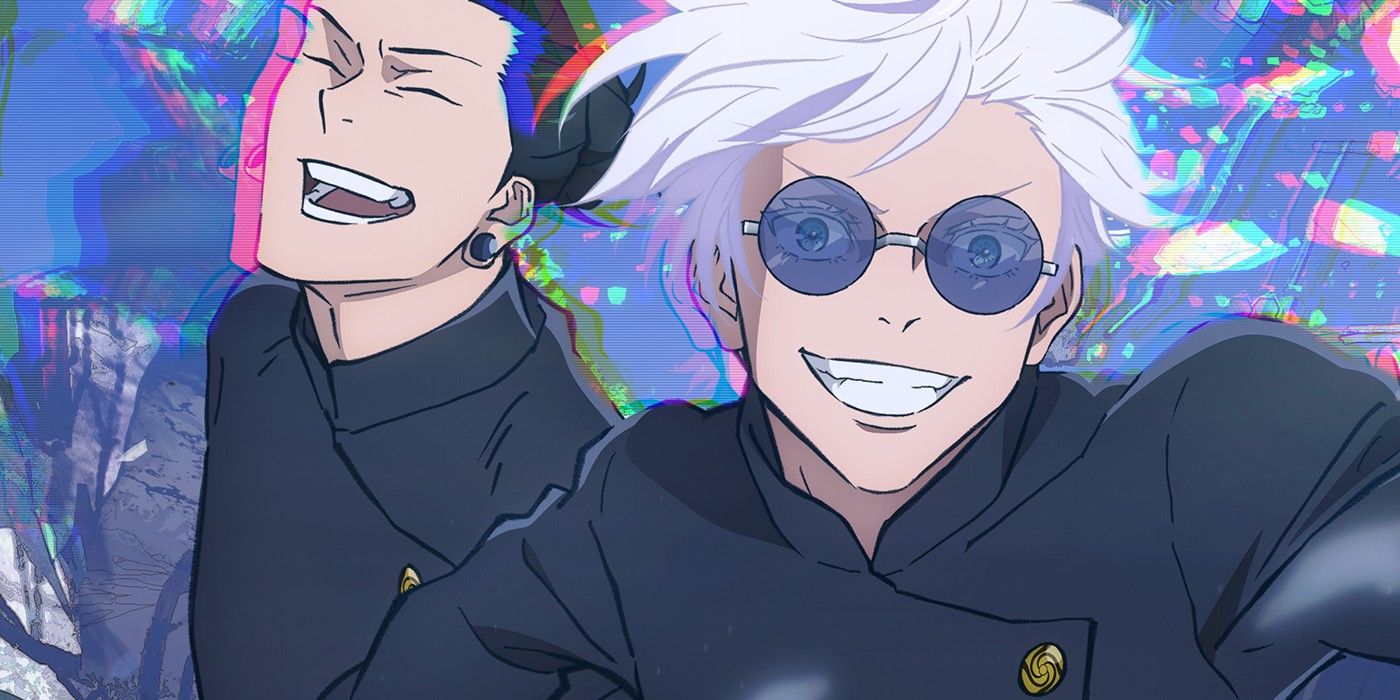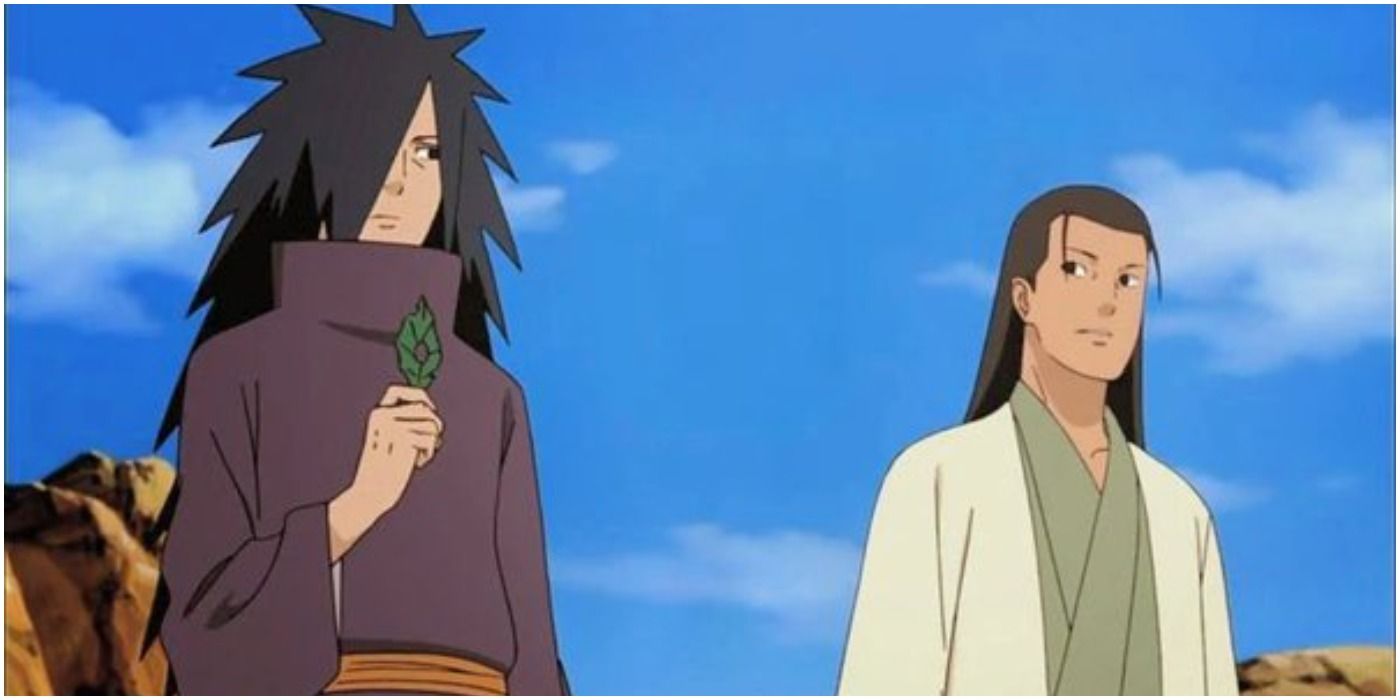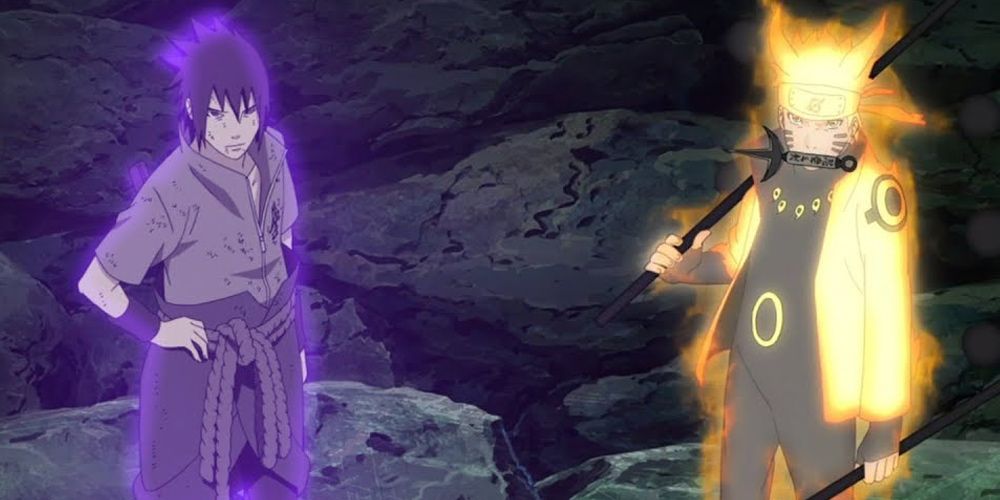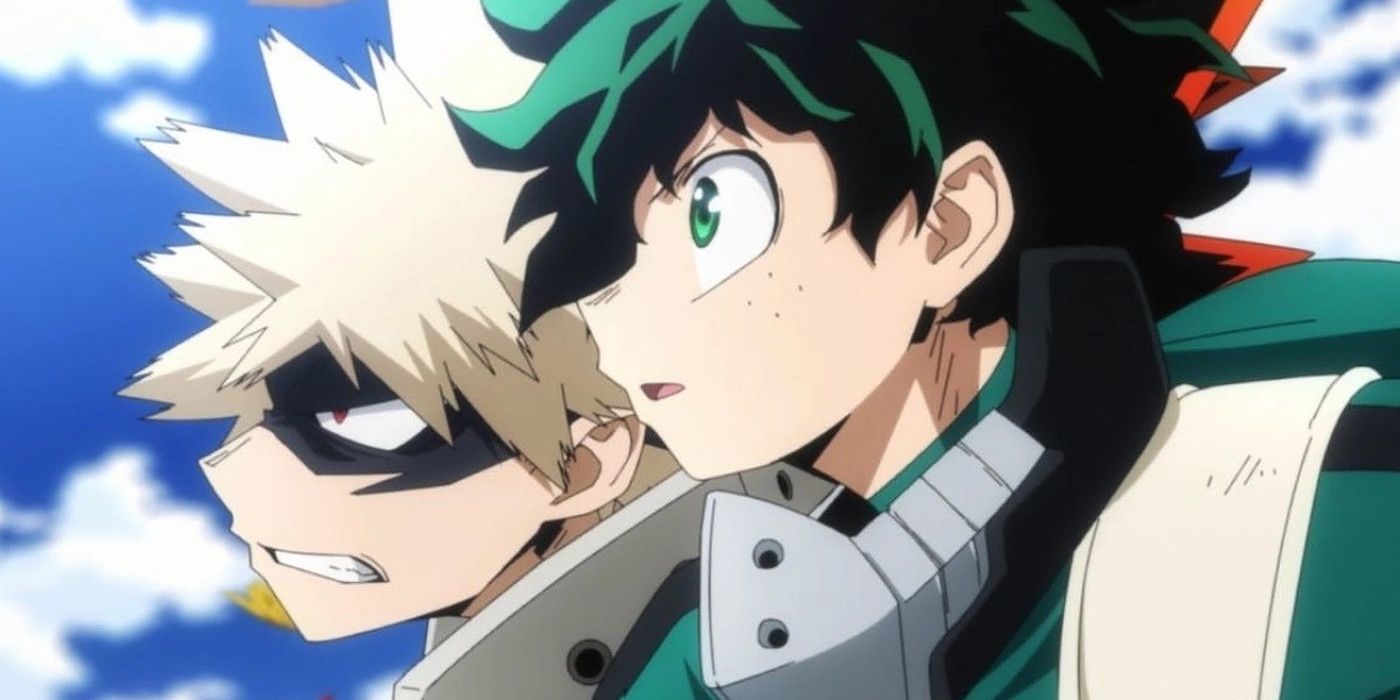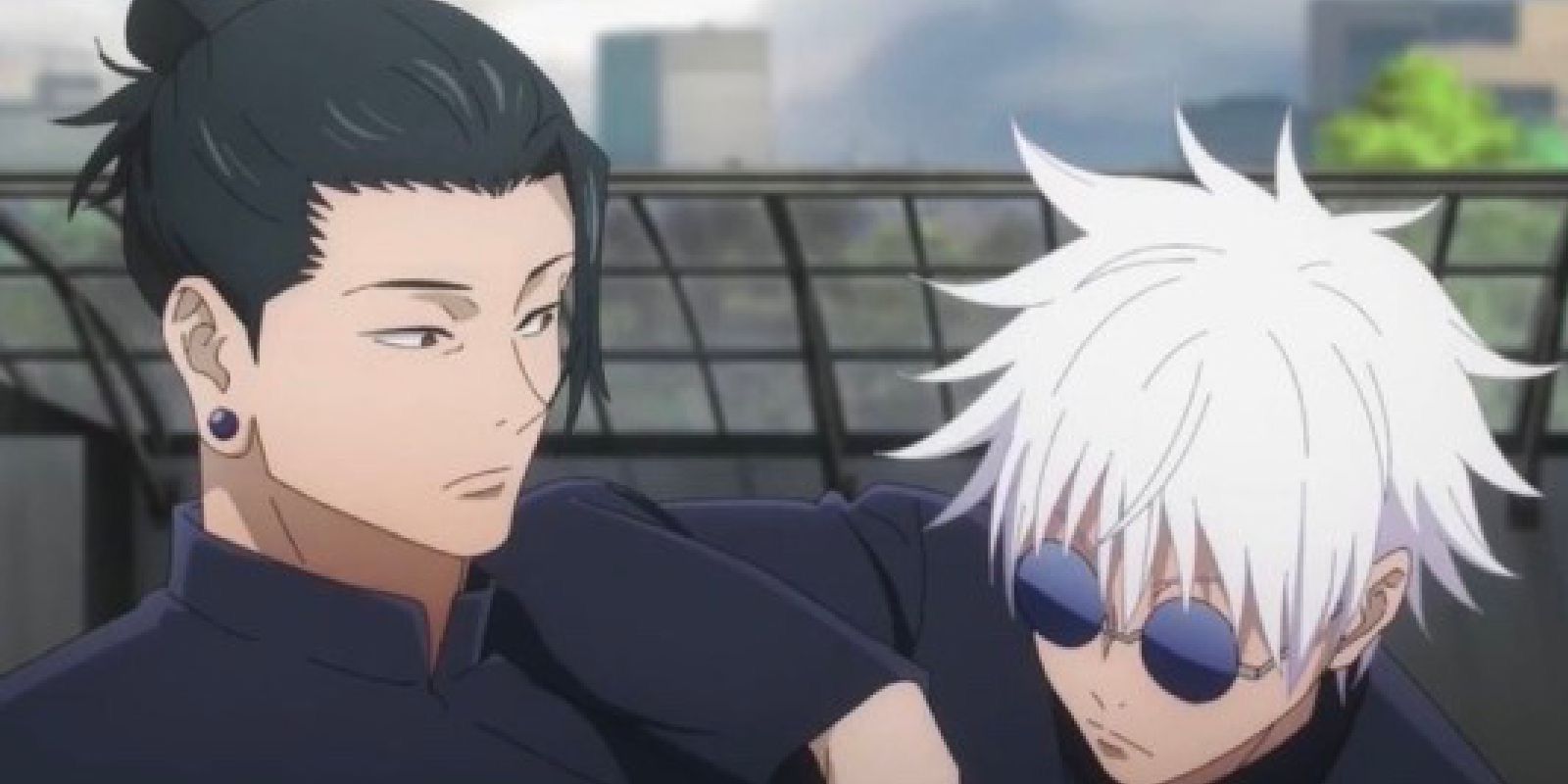The following contains spoilers for Jujutsu Kaisen Season 2, Naruto, and My Hero Academia, which are all available on various streaming services.
Out of the many common Shonen anime tropes, the tense yet entertaining dynamic between rivals has lasted for decades as the most iconic. Since action and competition are mostly prevalent across Shonen series, it makes sense why there are so many duos that can't help but clash in the most dramatic ways. That being said, this dynamic has become more of an overused trope than a cleverly chosen plot device because of how unoriginal many of these rivalries are, but there are a few that have tremendously subverted expectations.
Currently, one of the biggest rivalries in modern anime is between the characters Satoru Gojo and Suguru Geto from Jujutsu Kaisen. While season 2 is unveiling the hidden past of their complex relationship it's also setting a standard for how rivalries can be done, although it's not the first to reinvent the trope. This duo and a few others are more than the typical rivals. Their intense relationships are about more than entertaining viewers or adding dramatic competition to the plot. Each of these rivalries is different with an original purpose and meaning that adds a significant and irreplaceable boost to the series.
Naruto's Hashirama Senju and Madara Uchiha are Historically Iconic
Although their relationship is explained much later in the series, it is critical to the entire plot and can't be overlooked, making Hashirama and Madara important characters to understand. Their story is a part of the dark history of Naruto's Ninja universe and is also central to the core message of finding peace in the midst of hatred. During the decades of ravaging wars between clans, and before the creation of the Five Great Shinobi Villages, Hashirama and Madara were members of the two strongest clans, the Senju and the Uchiha, respectfully. From their first scene together to their last, their complicated friendship is nuanced in an original way that conveys the series' most important lore.
In their younger years, the two happened to meet by coincidence, and even though they were suspicious of each other's lineage they chose to avoid sharing their surnames because they both hoped for peace. Their dynamic was never centered around competition and, in a rare twist, the two hit it off right away as supportive friends, something they needed in the grim times of war. Sadly, this would never last and they wound up being forced into a rivalry because of the rivalry between their clans. As they grew up along the battlefield, Hashirama and Madara were forced to fight and the only reason they fostered contempt for one another is because of the complicated political landscape of their time.
Even after finding peace and creating the Hidden Leaf village, not all conflict was resolved as Madara feared for the strength of his clan. The Uchiha were forced under the leading rule of the Senju who controlled the Leaf Village through Hashirama, the first Hokage. In the end, there is no simple explanation for the source of Hashirama and Madara's rivalry. They aim to one-up each other for the sake of their ideals of peace and because their tense and complicated history forced them to become enemies.
Naruto and Sasuke Gave A Special Meaning To Rivals
At first glance, Naruto and Sasuke are very similar to most Shonen rivals, but there is a very significant purpose to their layered dynamic. Without question, Naruto fits into the role of the foolish underdog and Sasuke fits with the cool-headed genius prodigy, but there is more going on between these two outside their competition. This importance ties into the series' themes of loneliness and hope. Both Naruto and Sasuke have lonely childhoods and through their competition, they become best friends. In a cut-throat Ninja world, even the most bitter rival can help someone avoid feeling lonely. Between Naruto and Sasuke, there is a feeling that they would understand each other if they ever talked about their personal lives.
On the other side of this rivalry/friendship is a sense of hope, which is not so simple because of each character's background. They aim to beat each other in a fight, but this is so much more than a show of bravado for both of them. Since Naruto grew up hated by the villagers and with no direct family to look after him, his success against Sasuke gives him a sense of self-worth and confidence. For Sasuke, it's even more complicated. His only goal is to defeat Itachi, so he needs to be the strongest. Initially, Sasuke sees Naruto as the weakest shinobi, so of course the idea of Naruto defeating him would rattle Sasuke at his core. As the series progresses, their rivalry becomes less and less about the typical themes of competition and more about the fate of the world.
As dramatic as it sounds, Naruto and Sasuke gradually become symbols of opposing ideologies; Naruto represents love and forgiveness, and Sasuke represents hatred and revenge. Their competition also holds a special significance for Naruto as this was his biggest challenge of confidence. Over time, Naruto is able to overcome many obstacles, but the one challenge he stumbles with is his competition with Sasuke, who winds up triumphing over Naruto after their first battle at the Valley of the End, though only slightly. With one of Naruto's greatest strengths being his unrelenting endurance, he becomes an unstoppable force to face off against Sasuke who serves as an immovable object, so to speak.
When Sasuke becomes the world's biggest threat, it becomes up to Naruto to stop him. Fans could already surmise that the series would end with a grand battle that would settle the "Naruto versus Sasuke" debate, but the way the final fight was built up wound up being more significant than the actual battle. With the fate of the world at stake, Naruto's rivalry with Sasuke serves as the first and last conflict of his character journey. In a unique twist, however, this wasn't a fight between solid enemies either. Naruto and Sasuke are equally rivals, enemies, and friends by the end of the story and after their last battle, they become beloved characters who were able to overcome all their challenges, including the tense relationship they shared since childhood.
Death Note: Light And L Are Carefully Designed Rivals
Most Shonen rivals duke it out with their fierce muscles and overwhelming combat techniques, but in a refreshing twist, Death Note's rivals are different. Light Yagami and the Detective L are locked in a subtle battle of wits that proves to be more tense than most fight scenes. While there is an interesting premise before L becomes involved, the action of the story is jumpstarted when their rivalry begins. In fact, one could argue that their rivalry is the entire point of the series.
The only ways that these two are similar to typical rivals are how competitive they are and the fact that their rivalry is centered around their opposing ideologies. Light believes in divine punishment and takes matters into his own hands with the Death Note, using the secret codename Kira, while L believes in the process of law and aims to arrest the homicidal serial killer.
They are each other's greatest enemy and their dynamic is subtle yet tense. Light and L already know that they are enemies, but they are consistently stuck at a stalemate because of some very well-planned foundational details. Light can only silently kill his targets with the Death Note if he writes their name, but L is only a codename and therefore doesn't count. Because of how careful L is, Light has to be cunning in order to discover L's name and win against him. On the other hand, L only has a strong hunch that Light is the serial killer Kira and needs unquestionable evidence to prove that Light is guilty. With their bouts being subtle challenges of wit enhanced by overly dramatized animation, Light and L's rivalry is more suspenseful than action-packed and is a different type of thrill to watch.
MHA: Midoriya And Bakugo's Rivalry Only Scratches The Surface
The beginning of My Hero Academia may have similar themes of other action anime, but it becomes clear that the creator is doing something different with these themes and the main rivals. The idea of their being a number one hero who alone saves everyone is already a massive trope in anime, and what MHA is trying to do with its hero-tiered society is to show the problems inherent in such a system. The character Katsuki Bakugo is, in a twisted way, the poster boy for this society. From a young age, he has the strongest quirk and is made to believe that makes him more special than anyone else. He becomes arrogant with the fact that he fits in perfectly with the ideals of being the strongest stand-alone hero and is rewarded for it. This is the significance of his gradual rivalry with Izuku Midoriya, also known as Deku. Izuku almost never stands out and has no powers whatsoever, but also has the most important strength of a true hero, a noble heart.
At first, their rivalry appears to be centered around what makes a true hero; heart or raw strength, or even hard work versus natural talent. However, as the series begins to show the many detriments of solo heroics and glorifying superheroes, Deku and Bakugo's rivalry is changed into something more meaningful than the promise of a fight. By season 6 the most important message of the series becomes centered around the issue of solo heroes. The need for civilians to pull their weight and support heroes becomes important to resolve the major conflicts of society, and there's an even stronger emphasis on Deku not fighting alone and running himself ragged. At this point, the competition between heroes is over and done and the need for teamwork is more significant.
In the end, the rivalry between Deku and Bakugo was not what was important. Bakugo has a lot to learn from Deku as a wholesome hero while Deku needed to attain strength like Bakugo. As they learn from each other, their tense dynamic becomes more symbolic of the issues with competition among heroes and the problem with solo heroes. Rather than fighting against each other, their rivalry proves to be less important than their working together to build a better society than what they had before.
Gojo And Geto Add Nuance To The Typical Trope
At first glance, Gojo and Geto might have followed under the typical trope of bitter rivals turned to best friends, but there are twists and a completely different tone to this dynamic. As shown in the first few episodes of Jujutsu Kaisen season 2, these two have moments where they can't stand each other and have to compete, but the anime also shows that they have a mutual respect for each other. This isn't the usual dynamic of the unkempt fool versus the highly successful prodigy. Instead, Gojo and Geto appear to be roughly on equal footing, at least briefly. Aside from the fact that they play atypical roles within their dynamic, there's also the grim fate that awaits these friendly rivals.
By the start of season 2, JJK fans are already aware that Gojo and Geto have a falling out. The fact that they were once rivals turned into wholesome friends makes their parting that much more heartbreaking. Much of this goes beyond making the audience feel dread. Gojo and Geto's parting has a lot to do with the major issues faced by Jujutsu Sorcerers as each of them pave their own way towards making the world a better place. It's unfortunate, but tragedy is a major part of this series. Gojo's history with Geto shapes him into becoming the mentor figure to the protagonist Yuji along with the other students who aim to reshape Jujutsu society under Gojo's tutleage.
While any given Shonen rivalry is fun to watch, these rivals add a whole new meaning and point to having rivalries. The few that end in tragedy (like Gojo and Geto) are hard to watch and leave an impact on viewers, while the rivals that have a happier ending (like Naruto and Sasuke) become iconic fan favorites. Either way, these duos are unforgettable and prove that rivalries are about more than competition.

